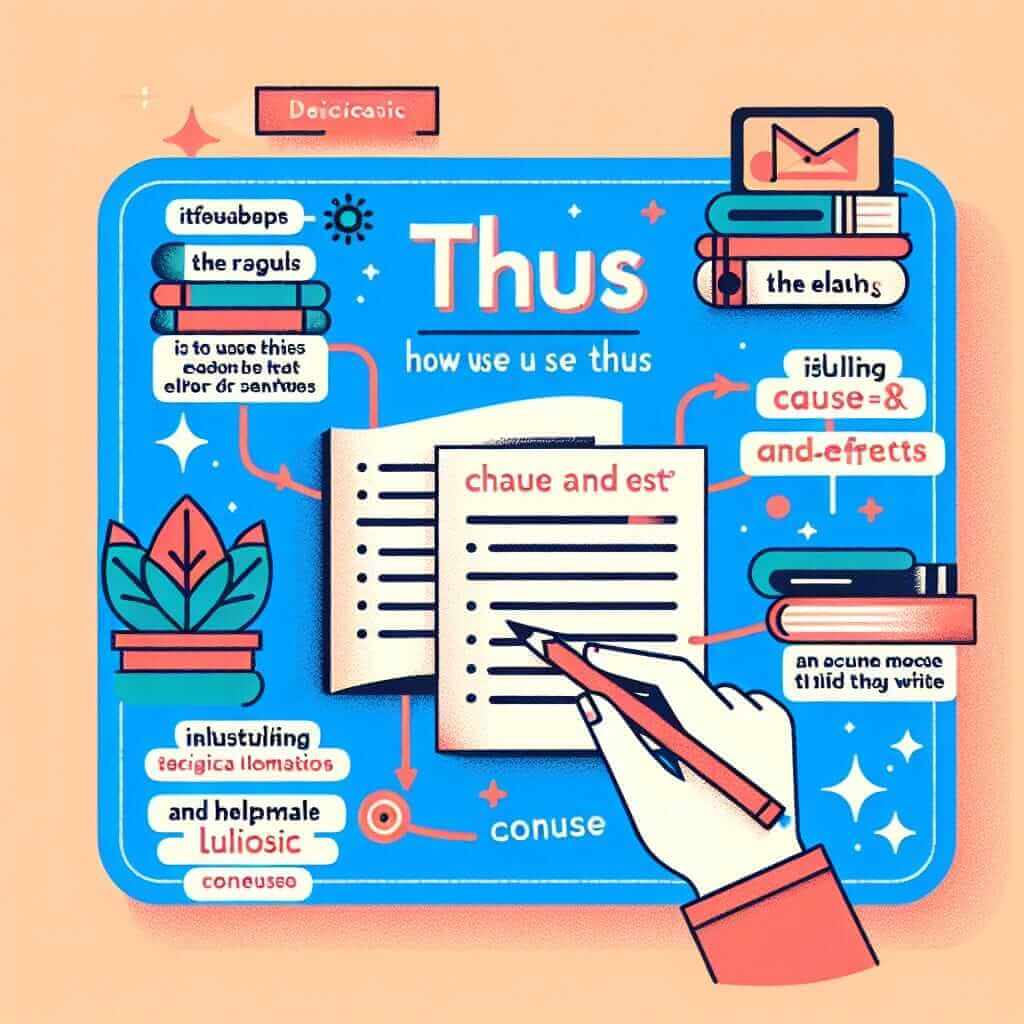“Thus” is a powerful transition word that can significantly enhance the clarity and sophistication of your writing in the IELTS exam. It indicates a cause-and-effect relationship, showing that a particular result stems directly from the previously mentioned reason. Mastering the use of “thus” can help you achieve a higher band score, demonstrating your command of advanced vocabulary and cohesive writing.
Here are some examples of how “thus” can be used in different sections of the IELTS:
Speaking Part 3:
“Many people believe that technology has made our lives easier. Smartphones, for example, allow us to access information instantly and connect with anyone in the world. Thus, it can be argued that technology has greatly improved our daily experiences.”
Analysis: Here, “thus” introduces the conclusion drawn from the preceding examples of technology making life easier.
Writing Task 1:
“The graph shows a sharp increase in online sales between 2010 and 2020. Thus, it can be concluded that the rise of e-commerce has significantly impacted traditional retail businesses.”
Analysis: “Thus” links the observed trend in the graph to a logical outcome concerning e-commerce.
Writing Task 2:
“Climate change poses a serious threat to our planet. Rising temperatures lead to the melting of polar ice caps, which in turn causes sea levels to rise. Thus, it is imperative that governments take immediate action to address this global issue.”
Analysis: “Thus” emphasizes the urgent need for action based on the chain of events caused by climate change.

Understanding the Use of ‘Thus’ in IELTS Writing
“Thus” is a formal transition word that signals to the reader or listener that you are about to present a result or consequence of the information previously stated. It adds a sophisticated touch to your writing and helps to create a natural flow of ideas. While “thus” is not overly common in everyday speech, it is a valuable tool for academic writing and is particularly useful in the IELTS exam to demonstrate your range of vocabulary and grammatical accuracy.
Implementing ‘Thus’ in Your Writing
The formula for using “thus” is generally:
[Cause or Reason] + [comma] + thus + [Result or Consequence]
Let’s delve into how you can effectively use this formula in different sections of the IELTS:
1. IELTS Writing Task 1:
“The production of plastic products requires significant amounts of fossil fuels. Thus, reducing plastic consumption is crucial for mitigating climate change.“
2. IELTS Writing Task 2:
“Education empowers individuals with knowledge and critical thinking skills. Thus, it plays a vital role in fostering social and economic development.“
3. IELTS Speaking Part 3:
“Learning a new language can be challenging but highly rewarding. It broadens one’s horizons, allowing for deeper cultural understanding. Thus, I believe language learning should be encouraged from a young age.“
Enhancing Your Score with ‘Thus’ and Similar Transitions
While “thus” is valuable, varying your vocabulary demonstrates greater language proficiency. Consider these alternatives, each with slight nuances:
- Therefore: Similar to “thus,” but slightly less formal.
- Hence: Implies a logical conclusion drawn from the previous statement.
- Consequently: Emphasizes a direct causal relationship.
- As a result: A more informal alternative to “thus.”
Example:
“Regular exercise improves cardiovascular health and strengthens the immune system. Consequently/Therefore/Hence, it contributes to a longer and healthier life.“
Common Errors to Avoid
- Comma misuse: Always use a comma before “thus” when it introduces a result within a sentence.
- Overuse: Using “thus” too frequently can make your writing sound repetitive.
- Informal context: “Thus” is quite formal and may not be suitable for every context in the speaking test. Choose your words carefully depending on the formality of the situation.
Conclusion
Mastering the use of “thus” and its synonyms can significantly enhance the clarity, cohesion, and sophistication of your IELTS writing. By understanding its proper implementation and avoiding common pitfalls, you can confidently express cause-and-effect relationships, impressing the examiner and boosting your band score. For further practice, try incorporating “thus” into your IELTS writing practice essays and speaking responses.